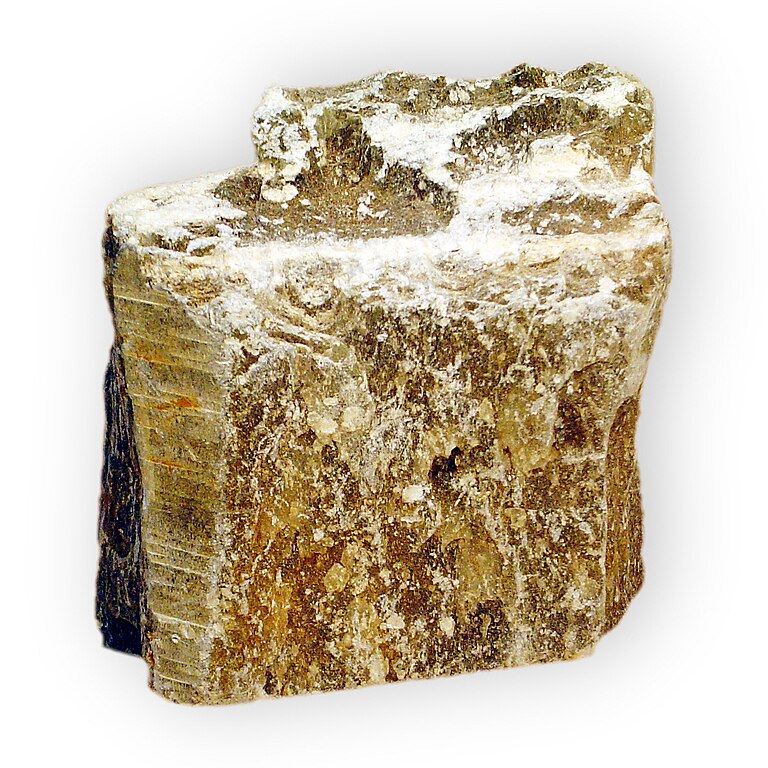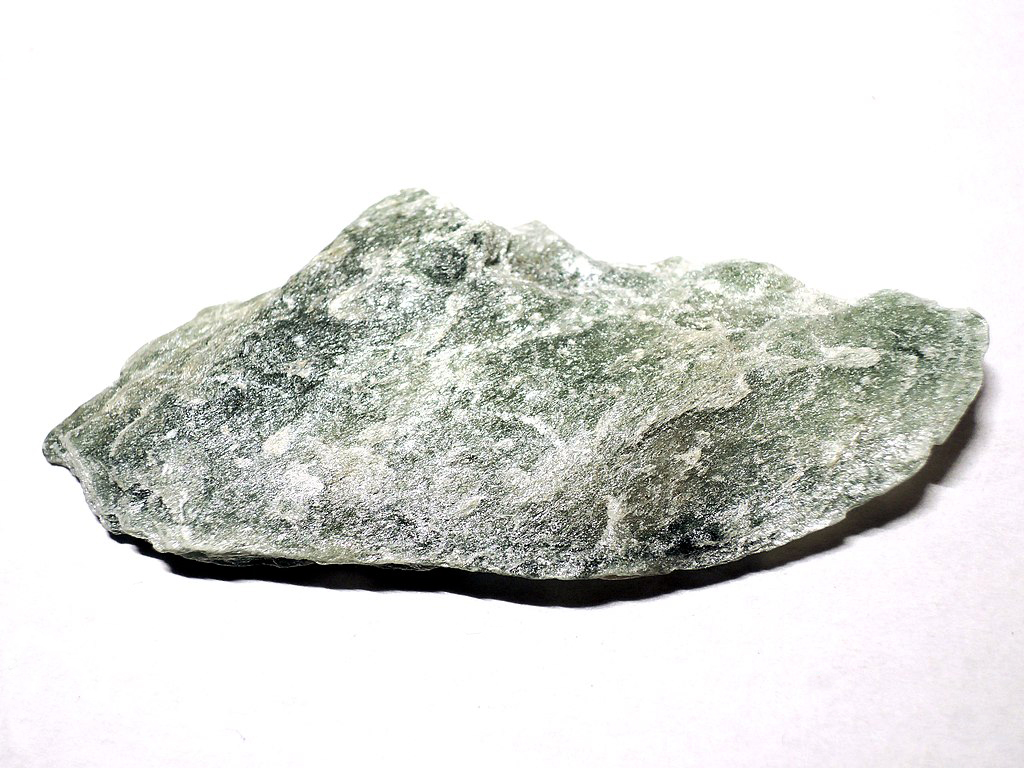Soapstone
It’s hard to imagine, but talc, considered one of the softest minerals, soft enough to powder a baby’s skin, is also the main ingredient of the metamorphic rock soapstone, which is used for building woodstoves, kitchen sinks, and countertops. Soapstone does have a smooth or even soapy feeling to it, but it also does a great job of resisting heat, acid, and stains. It also can hold heat really well, so if you use it to make a woodstove for example, once you heat up the stove, the soapstone will keep providing heat for a while even if the fire gets low. Although it is as hard as a rock, you might say, it’s also pretty easy to carve, so since ancient times it’s been used to make animal figurines, other small statues, bowls, pipes for smoking, and other objects. Soapstone is also sometimes called steatite, from the ancient Greek word for “tallow” (cow or sheep fat that’s been turned into oil) probably because of its soapy (or oily) feel. None of its ingredients seem particularly soapy though, with most of soapstone being silicon, most of the rest being magnesium, and the remainder being water.
| Formula | Group or Type | Shape | Hardness | Specific Gravity | Streak | Luster |
|---|---|---|---|---|---|---|
| — | — | — | 1–2 | 2.2–2.8 | — | — |


